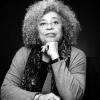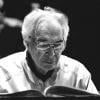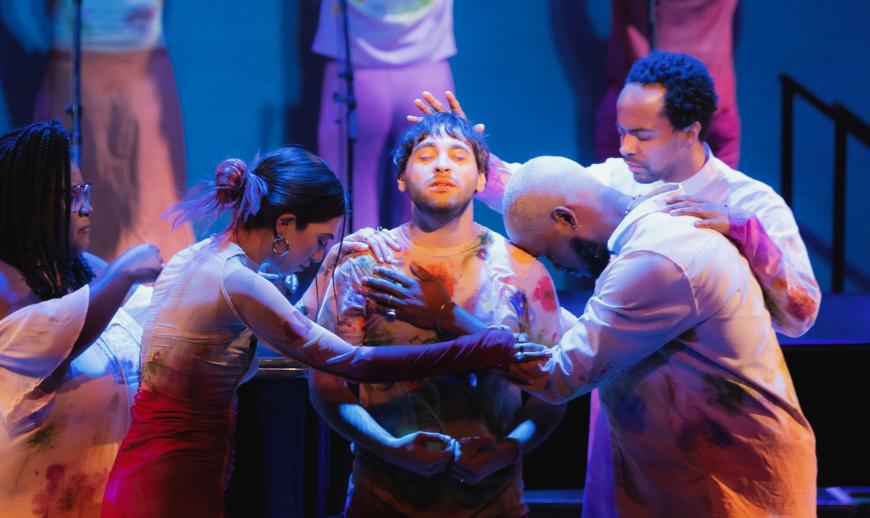
Described by The New York Times as “one of the most affecting singer-songwriters today, in any genre,” composer, pianist, vocalist, and filmmaker Samora Pinderhughes has been working on The Healing Project for the last nine years. An in-depth examination of the U.S. prison-industrial complex, the undertaking addresses poverty, incarceration, and police brutality through first-person narratives and has proved so compelling that the 32-year-old Pinderhughes received a $1 million grant from the Andrew W. Mellon Foundation last year.
In original music and film bringing together the stories of people impacted by structural violence, The Healing Project lands at UCLA’s Royce Hall on Feb. 1, when Pinderhughes and friends, including his sister, acclaimed flutist Elena, will take the audience on a deeply moving journey steeped in connectivity and compassion. The Berkeley-born, New York-based Pinderhughes, who is studying for a Ph.D. in creative practice and critical inquiry from Harvard under the direction of Vijay Iyer, comes by his activism naturally; both of his parents are educators, community workers, and social and racial justice activists.
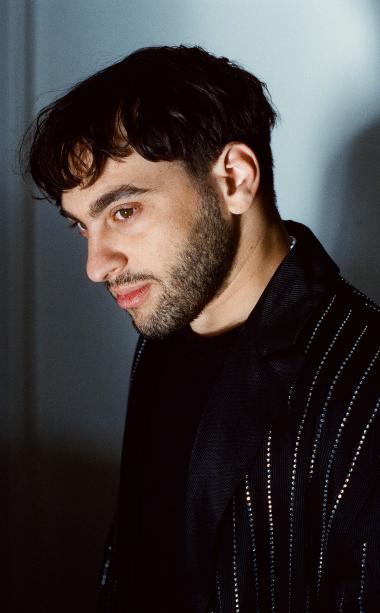
Pinderhughes’s love of music was also fostered at a young age and led to his studying jazz at The Juilliard School with Kenny Barron and Kendall Briggs. Earning a degree in 2013, Pinderhughes went on to direct and create The Transformations Suite, which combines theater, music, and poetry to examine the radical history of resistance within the communities of the African diaspora. Out of that came a 2016 recording of the same name, which then caught the attention of rapper Common and producers Karriem Riggins and Robert Glasper, who collaborate together as August Greene. Pinderhughes would go on to tour and record with the trio.
It was also in New York that he met his mentor, award-winning playwright and actor Anna Deavere Smith, whose work combines the journalistic technique of interviewing her subjects with the art of interpreting their words through performance. In addition, Pinderhughes was a Sundance Composers Lab fellow and scored the acclaimed documentary Whose Streets? and the short film “Concussion Protocol,” the latter described by The New Yorker as having “a haunting, breath-like soundtrack.” His live performances have included gigs at The Kennedy Center and Carnegie Hall, and he’s also toured internationally with, among others, Branford Marsalis, Herbie Hancock, and Chief Xian aTunde Adjuah (formerly known as Christian Scott).
SF Classical Voice caught up with Pinderhughes by Zoom, with the conversation ranging from his work on The Healing Project and his songwriting process to winning the Mellon grant.
How did The Healing Project come about?
I created it when I wanted to do an interview-based project and went to 15 different states over the course of five years and talked to hundreds of people, primarily about their experiences dealing with the prison-industrial complex and how they are trying to move through their lives on a day-to-day basis. A lot of times we focus on one specific event, but how are people dealing on a day-to-day level with things going on in society, and how [does] it affect their physical and emotional makeup?
We’re not sensitive [as a society] to what people are dealing with, particularly young people in communities of color, [who are] labeled early on as criminals, and nobody looks closely at what they’re dealing with. It was me developing relationships through long conversations over time and wanting to create an art piece around the country.
What are some of the things that are most important to you about The Healing Project, which was also presented as an exhibition at San Francisco’s Yerba Buena Center for the Arts in 2022?
One thing is that it’s a community project in several different ways. The material inside it, and the art, is made in the community. That’s important to me. I believe in community as a practice and in principal. Everyone who is part of it — being in conversations with one another — shares resources and tools to speak out together against the system. The community part is important to me, even from outside, [with] audience members coming to an exhibition or performance.
Through that activity, they hopefully become a part of that community that they can enter into and continue with us on the journey. I hope The Healing Project lasts long after I’m alive, as we build community around the country and around the world.
The second [aspect] of The Healing Project is an abolitionist project. What I mean by that is that one of the purposes of the project is to see beyond the need for prisons in our society and to see the way prisons are creating even more trauma rather than healing or “rehabilitating” people. One of the goals of the project is to provide a future world built around healing rather than around punishment.
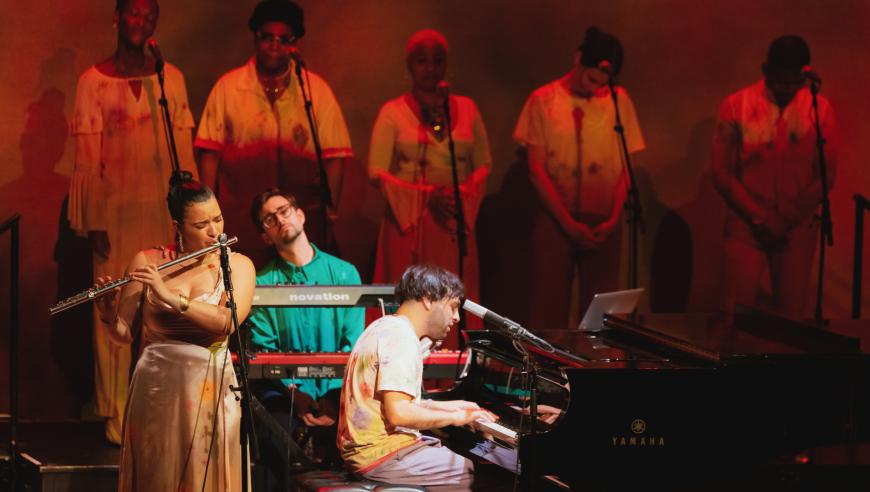
Could you tell us about your relationship with Anna Deavere Smith? When and how did you meet, and how has she influenced your work?
I met her through Marcus Shelby, a frequent collaborator with Anna on her plays. Marcus recommended me to her for a class she was teaching at NYU many, many years ago. … She became a close mentor to me and took me under her wing, [and] through that I was able to have a window into her genius and her process, which is important to me.
The Healing Project wouldn’t exist without her. Her institute [the Institute on the Arts and Civic Dialogue at NYU] gave me the initial support to start it, and my interview-based approach was inspired by the way she does her interview-based process. She gave me her blessings and is very much in my corner. I’m very lucky for that, and she continues to be part of The Healing Project.
Also part of The Healing Project is your 15-track album Grief, which features cuts including “Masculinity,” “Rise Up,” and the title track. I read that when you’re writing songs, you sometimes feel like you’re talking to dead people you never met. What did you mean by this?
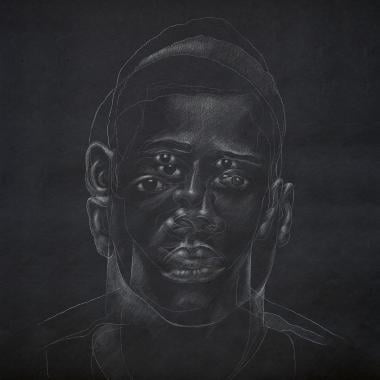
What I mean by that is it’s a common spiritual practice [found] in a lot of Indigenous traditions. People call it a lot of different things. Some people say it’s communing with ancestors, it’s a connection to people who have passed on. That’s a common thing, but for me that’s part of the creative process — tapping in and having that open line of communication to receive messages from ancestors, people who have passed on.
It’s a process I try to engage with, [along with] historical research. I write songs about people who’ve been killed by police; I try to put myself into conversations with them. Sometimes it’s spiritual, sometimes it’s research — subverting the ego and opening that channel through the creative process. It’s very healthy.
Why do you think people don’t know how to deal with grief?
Our society doesn’t really put a premium on sharing and understanding the tools for people to deal with grief; it also doesn’t provide space for people to be supported. Grief is not a process or set of emotions conducive to capitalism, a work life. You need to take time. You need to be supported and be given the grace to deal with going through a lot of different emotions during that time period.
We have to find it in our community experience and through this project and others around this topic that [allow] people to understand how better to support their friends [and] their families during those times.
What was your reaction when you learned that you were the recipient of a $1 million Mellon grant — a sum nearly equal to that of a Nobel Prize! — and how have you been making use of the funds?
Obviously, I was extremely, extremely grateful and humbled by the opportunity. [With] so many different artists and creators that have so many different ideas, you’re only able to realize [your] vision on a certain level because of financial restrictions. It’s an absolute dream come true. What we’re doing is we’re transforming The Healing Project from a project to an arts organization. We will continue to do what we’ve been doing — co-creating art projects, performances with the communities who have experienced harm — and continue to make work and show work.
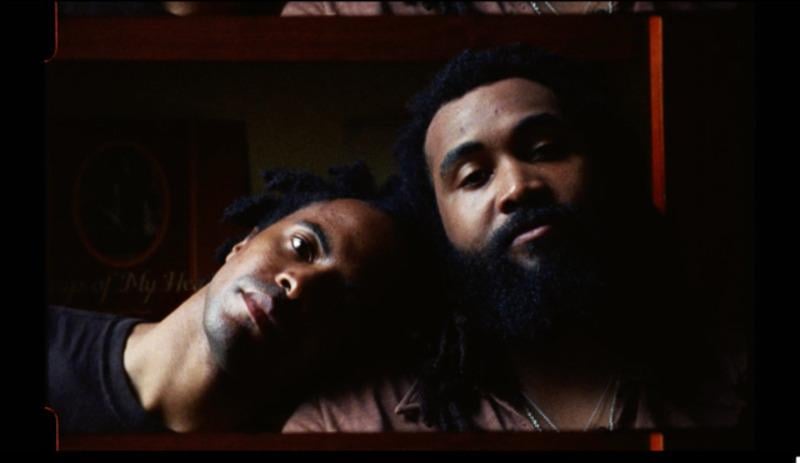
In addition to that, it’s an organization that continues our mission to create art about the trauma that comes from the prison-industrial complex and ways people are trying to heal from that trauma. We’re going to be able to expand that and do it in more varied ways. [We’re] also creating new opportunities for The Healing Project, where we’re able to work with interviewees to create their own transformative projects that are important in their lives.
One inmate is Keith LaMar, [who] is on death row in Ohio. In 2023 we worked with him to get that date moved and build a case for his exoneration. We will be putting out a new piece with him next month that is part of our extended work. These are the kinds of things we’re able to do — use artwork to have an impact on people’s lives in ways they can create and [through which they can] be recognized for their own contributions and have an impact on large-scale structural things like policy.
What advice do you have for aspiring composers and performers?
Number one, I would say trust your own instincts about where creative passion will lead you. Don’t feel like you have to fit in the box of being one type of artist or genre. Go where it leads you and figure out how to let that speak in the most profound way.
Second, find your community, and if you don’t feel comfortable or seen or understood in any existing community, then create your own community. And don’t be afraid to do that. Community is the most beautiful thing on the planet, and I would hope that there will be many future communities.
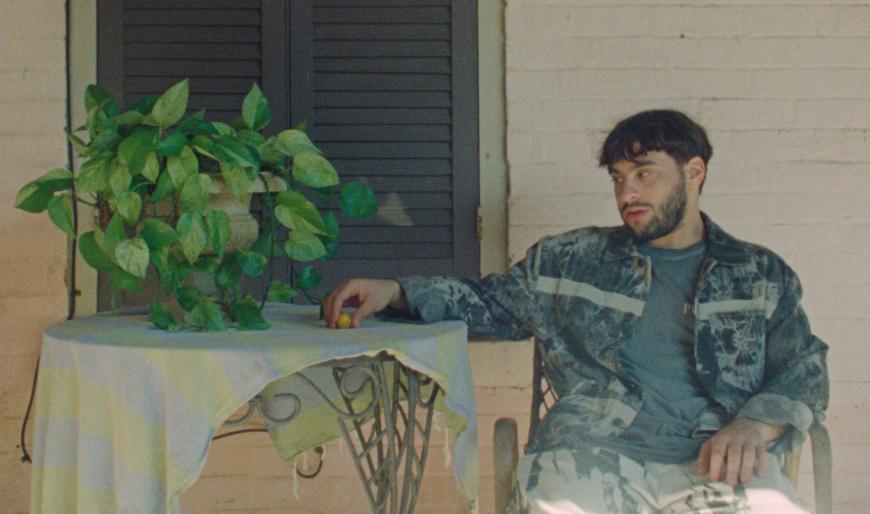
These are decidedly difficult times, and your work addresses big issues. So, what does it mean to be alive now?
Ooh, that’s a big question. I guess the first thing I would say is it means being in touch with the truth, both your own truth and being honest about what’s happening in the world. It means being unafraid to feel things deeply and be affected by things going on around you and to learn how to engage with that in a way that doesn’t make you turn away or turn off but instead be a part of those feelings and what’s going on and be responsive to it.
I think that’s what the time period demands of us as a collective: building new structures to imagine new ways of being together, new infrastructures that are less restrictive and exploitative.


